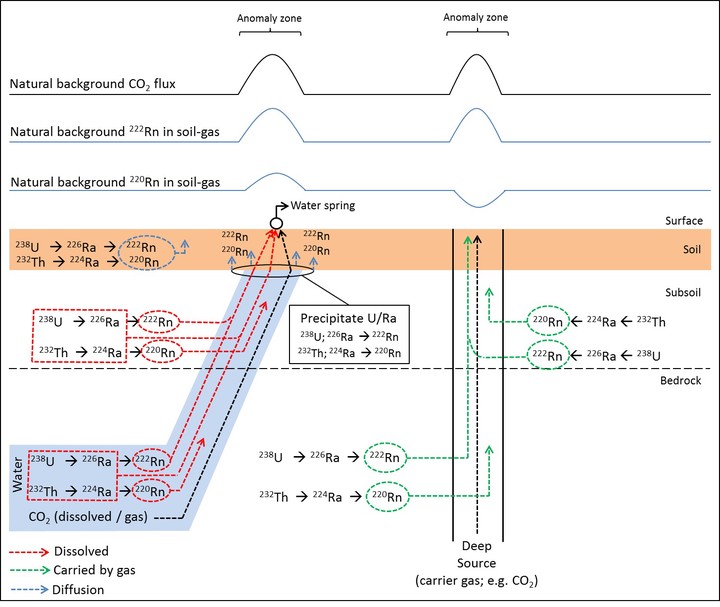CO2 and Rn degassing from the natural analog of Campo de Calatrava (Spain): Implications for monitoring of CO2 storage sites

Abstract
Natural analogs offer a valuable opportunity to investigate the long-term impacts associated with the potential leakage in geological storage of CO2.
Degassing of CO2 and radon isotopes (222Rn–220Rn) from soil, gas vents and thermal water discharges was investigated in the natural analog of Campo de Calatrava Volcanic Field (CCVF; Central Spain) to determine the CO2–Rn relationships and to assess the role of CO2 as carrier gas for radon. Furthermore, radon measurements to discriminate between shallow and deep gas sources were evaluated under the perspective of their applicability in monitoring programs of carbon storage projects.
CO2 flux as high as 5000 g m−2 d−1 and 222Rn activities up to 430 kBq m−3 were measured; 220Rn activities were one order of magnitude lower than those of 222Rn. The 222Rn/220Rn ratios were used to constrain the source of the Campo de Calatrava soil gases since a positive correlation between radon isotopic ratios and CO2 fluxes was observed. Thus, in agreement with previous studies, our results indicate a deep mantle-related origin of CO2 for both free and soil gases, suggesting that carbon dioxide is an efficient carrier for Rn. Furthermore, it was ascertained that the increase of 222Rn in the soil gases was likely produced by two main processes: (i) direct transport by a carrier gas, i.e., CO2 and (ii) generation at shallow level due to the presence of relatively high concentrations of dissolved U and Ra in the thermal aquifer of Campo de Calatrava.
The diffuse CO2 soil flux and radon isotopic surveys carried out in the Campo de Calatrava Volcanic Fields can also be applicable to geochemical monitoring programs in CCS (Carbon Capture and Storage) areas as these parameters are useful to: (i) constrain CO2 leakages once detected and (ii) monitor both the evolution of the leakages and the effectiveness of subsequent remediation activities. These measurements can also conveniently be used to detect diffuse leakages.